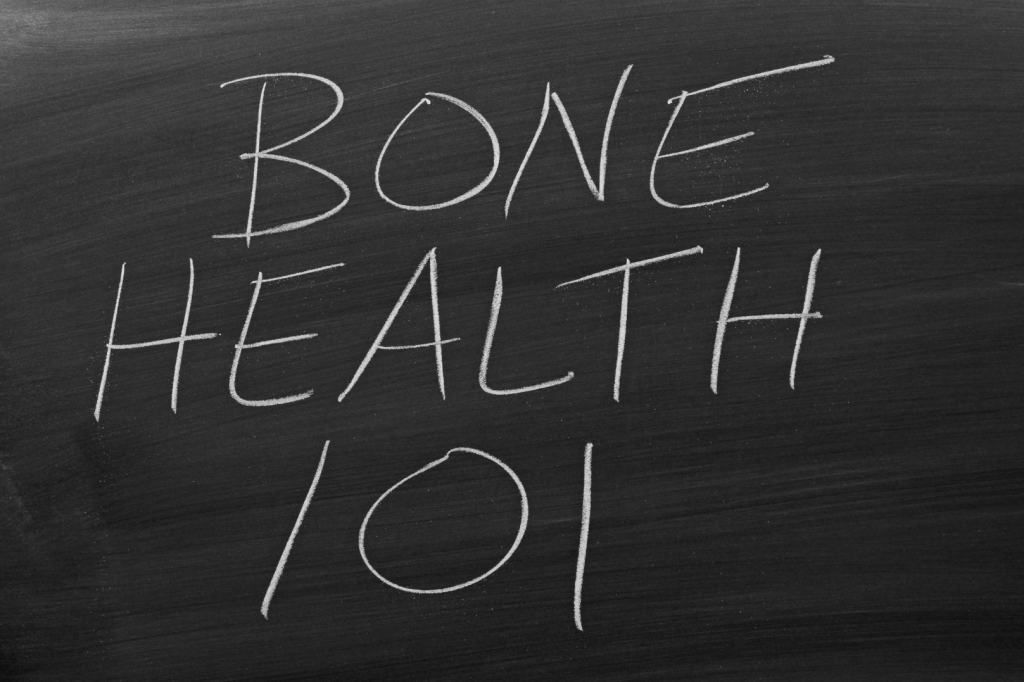
Low Vitamin D: Causes, Prevalence, Nutrigenetics, Supplementation, & More


Low Vitamin D: Causes, Prevalence, Nutrigenetics, Supplementation, & More
Vitamin D has gained significant traction recently for supporting health and well-being beyond bone health.
But despite how important it is, a staggering number of people worldwide have low or deficient levels, and recommended daily intake doses are woefully inadequate. This can have far-reaching implications for health.
While many things contribute to vitamin D status, more research shows that genes affect how our body responds to vitamin D. This field of science, known as nutrigenomics, explores the relationship between genes, nutrition, and how they interact to affect our health.
Whether you are curious about the genetic role of vitamin D metabolism or seeking solutions to optimize your levels, this article is for you. Below, we break down why vitamin D deficiency is so common, how genes may play a role, and steps you can take to improve your status.
By uncovering the puzzle of low vitamin D, you may better understand your deficiency risk and how to optimize your status.
The Many Roles of Vitamin D

Vitamin D is a versatile nutrient with the ability to function as both a hormone and a vitamin. This allows it to carry out its many important roles, including:
- Bone Health: vitamin D helps regulate calcium absorption from the intestines. It also supports and maintains adequate levels of calcium and phosphorus in the blood. These two minerals are key ingredients for your bones.
- Immune Function: vitamin D supports immune cells and plays a role in regulating inflammation.
- Cell Growth & Differentiation: vitamin D influences processes of cellular growth, proliferation, and differentiation. It also regulates the development and maturation of various cell types.
- Muscle Function: Vitamin D is vital for muscle function and strength. Adequate levels improve muscle performance and may reduce the risk of falls and fractures later in life.
- Mood: Emerging research has found a potential link between vitamin D and mood regulation.
- Heart and Blood Vessel Health: Vitamin D supports normal blood pressure. It also helps balance inflammation and supports the health of cells that line your blood vessels.
- Gene Expression: Vitamin D influences the expression of some genes involved in cell growth, differentiation, and immune function. It can also act as a transcription factor, helping to modulate gene activity.
Keeping vitamin D levels within range is important to support the many functions listed above.
While sunlight exposure is a natural source of vitamin D, dietary sources and supplementation are often needed to meet the optimal requirements. This can be even more important if you have limited sun exposure or certain risk factors.
Assessing Vitamin D Status
Vitamin D status is measured by the level of 25-hydroxyvitamin D, or [25(OHD], in your blood. By checking your level, you can take proactive steps to optimize your levels and reduce the risk of deficiency.
This is important for many reasons, including:
- Overall health
As we learned above, vitamin D is required for many important body functions. It is a critical nutrient in supporting overall health, especially bone and heart health, mental health, immune and muscle function, and cell regulation.
- Risk Assessment
Assessing levels can help you understand your unique risk for vitamin D deficiency. Older adults, those with limited sun exposure, darker skin color, and some medical conditions are more prone to deficiency.
Knowing your status allows you to identify it early, and take proactive measures if needed.
- Reducing Chronic Disease Risk
Having levels within range may help lower the risk for various chronic diseases. These can include cardiovascular disease, some cancers, autoimmune conditions, and infections.
- Sun Exposure
Knowing your level can help you know if you are getting enough sun exposure since it is the primary source of vitamin D to the body.
- Personalized Nutrition
Understanding your own hierarchy of nutritional decisions can help decide the best supplementation dosages for you.
If low, work with a practitioner who can examine your history, health goals, and vitamin D levels to determine the dose and duration of supplementation to get your levels within range.
- Monitoring Supplement Response
If you take a vitamin D supplement, checking your vitamin D status can determine if it is working to get you into optimal doses. It can also allow for adjustments in dosage if needed.
Some people may need doses as high as 20,000 IU/day to correct a long-term or severe vitamin D deficiency. However, it can be harmful and cause excess vitamin D levels to take such high doses for more than 2 – 3 months.
Results of vitamin D testing are reported in either nanograms per milliliter (ng/mL) or nanomoles per liter (nmol/L) depending on the specific lab. While different labs may use different ranges or testing methods, the generally accepted ranges are:
| Status | nmol/L | ng/mL |
| Deficiency | Less than 30 nmol/L | Less than 12 ng/mL |
| Insufficient | Between 30 and 49 nmol/L | Between 12 – 19 ng/mL |
| Sufficiency | Greater than 50 nmol/L | Greater than 20 ng/mL |
| Excessive | Above 125 nmol/L (50 ng/mL) | Above 50 ng/mL |
| Toxicity | Above 150 nmol/L | Above 60 ng/mL |
The relationship between vitamin D levels and health can vary between racial and ethnic groups.
For instance, in White and Mexican Americans, higher vitamin D levels are linked to better bone density scores and lower fracture risk.
In Black Americans, bone density remains high even with very low vitamin D levels. This is what is known as the “vitamin D paradox in Black Americans”.
Important, there is still too much uncertainty and a lack of strong evidence to support using lower reference ranges in these populations.
Signs and Symptoms of Low Vitamin D
Common Signs and Symptoms Associated With Low or Suboptimal Vitamin D

Low or suboptimal vitamin D levels can manifest through many non-specific signs and symptoms. This can make it difficult to detect without bloodwork. They may include:
- Bone & muscle weakness
- Mood changes
- Slow wound healing
- Bone loss and low bone density
- Increased susceptibility to infections
- Joint & muscle pain
Hormonal Effects of Suboptimal Vitamin D
Vitamin D also has hormonal effects, and suboptimal levels can impact pathways involved in the production, regulation, and activity of many different hormones in the body. Hormone impacts of suboptimal vitamin D may include:
- Parathyroid Hormone (PTH): Vitamin D plays a role in regulating calcium levels in the blood. When vitamin D levels are low, parathyroid hormone (PTH) from the parathyroid glands can increase. This can affect bone health and calcium balance.
- Insulin: vitamin D can influence insulin production and secretion by pancreatic beta cells. Inadequate vitamin D levels may promote insulin resistance and impaired glucose metabolism.
- Testosterone: There is a link between vitamin D levels and testosterone, particularly in men. Vitamin D deficiency is linked to lower testosterone levels, although exact mechanisms are not yet fully understood.
- Estrogen: Vitamin D plays a role in regulating estrogen levels, particularly in women. Adequate levels are linked to improved estrogen metabolism. Conversely, low levels may increase the risk for estrogen-related conditions like PCOS.
- Cortisol: Vitamin D deficiency can affect the hypothalamic-pituitary-adrenal axis (HPA axis). This axis regulates the production and release of cortisol, a stress hormone. Disruptions in this axis may contribute to dysregulated stress responses.
Symptoms of poor vitamin D status and its hormonal impact can vary depending on which hormones are affected. Some general symptoms may include:
- Fatigue and lack of energy
- Mood swings and depression
- Weight gain or difficulty losing weight
- Decreased libido and sexual dysfunction
- Menstrual irregularities
- Bone and muscle weakness
- Increased risk of infection
- Changes in blood sugar regulation
These signs and symptoms can have many causes outside of vitamin D status. It is important to work with a healthcare provider who can help figure out any underlying factors that may be contributing.
What Causes Low Vitamin D or Makes It Harder to Correct A Vitamin D Deficiency?
Vitamin D status varies across populations and geographical areas due to sunlight exposure, diet habits, and cultural practices. However, deficiency is common worldwide.
Certain groups tend to be at higher risk, and certain factors can increase your risk. These may also make it harder to bring levels into an optimal range.
Such factors include:
- Low sun exposure
Vitamin D is often called the sunshine vitamin because your body can make it when your skin is exposed to sunlight. Those who do not get regular sun exposure, such as those living in Northern latitudes or spending lots of time indoors will make less from the sun.
Geographic location, seasonal changes, sunscreen use, and cultural practices can also make it more challenging to correct a deficiency solely through sunlight exposure.
- Older Age
There are age-related changes in the skin that can contribute to lower vitamin D synthesis. Reduced outdoor activity can also contribute to lower vitamin D status in older adults.
Age-related changes in the kidneys and digestive tract can affect vitamin D conversion and absorption.
- Dark Skin
Melanin is a pigment that is responsible for skin color. Higher melanin content reduces your skin’s ability to produce vitamin D from sunlight. This makes those with darker skin more prone to vitamin D insufficiency compared to those with lighter skin.
- Obesity
Because vitamin D is a fat-soluble vitamin, it can accumulate in adipose (fat) tissue. This reduces how much is available to the body.
Those with higher body weights or body fat may need higher doses of supplementation to achieve optimal levels because of this lower bioavailability.
Conversely, some people may find it easier to lose weight in the summer, when they supplement with vitamin D, or when their vitamin D levels are higher.
- Poor Digestion
Some digestive disorders can impair the absorption of fat-soluble vitamins, including vitamin D. These include celiac disease, Crohn’s disease, and cystic fibrosis, which can increase the risk of vitamin D deficiency.
They can also interfere with vitamin D absorption from diet or supplements and may need higher doses or alternative forms of vitamin D to compensate for poor absorption.
- Diet
Vegetarians, vegans, and those with restrictive diets may have a lower dietary intake of vitamin D, increasing the likelihood of deficiency.
Vitamin D is only found in a limited number of foods like fatty fish, egg yolks, and fortified dairy. Any diet that may restrict these foods can have difficulty getting enough vitamin D from the diet.
- Inflammation
Inflammation lowers blood levels of vitamin D, which can contribute to a vitamin D deficiency. Reciprocally, low vitamin D status can worsen inflammation, creating a vicious cycle.
- Seasonal Variations
In places with distinct seasons, vitamin D levels are often lower during winter months. This is because limited sunlight exposure reduces vitamin D synthesis in the skin.
Seasonal variations can contribute to low vitamin D levels and increase the risk of deficiency.
Addressing the factors listed above can help improve vitamin D status. This can include increasing sunlight exposure, increasing vitamin D-rich foods, and considering supplementation can help correct a deficiency.
It’s important to consult with a healthcare provider for proper diagnosis, personalized advice, and monitoring when dealing with low vitamin D levels.

Other Challenges in Correcting a Deficiency
Factors outside of those mentioned above that can make correcting a deficiency more challenging include :
- Severity of deficiency: your baseline vitamin D status can affect the time it takes to correct it into optimal ranges. Severe deficiencies may require higher doses and longer durations of supplementation to restore optimal levels.
- Duration of deficiency: how long you have been deficient can also play a role and can impact the time it takes to correct. Prolonged vitamin D deficiency may require more extended periods of supplementation to replenish body stores.
- Medications and Interactions: Certain medications can affect vitamin D metabolism or absorption. It’s important to consider potential drug interactions and consult with a healthcare professional if you’re taking medications and aiming to correct a vitamin D deficiency.
- Other Health Conditions: Certain health conditions can affect vitamin D metabolism and levels. In these cases, correcting a vitamin D deficiency may require close monitoring and management by a healthcare professional.
Correcting Low Vitamin D levels
Vitamin D3 vs Vitamin D2
Vitamin D3 (cholecalciferol) and vitamin D2 (ergocalciferol) are two forms of vitamin D that are commonly found in supplements and fortified foods. They share many similarities in both function and effect on the body, but some important differences include:
- Source: D3 comes from animal sources. These include fish, eggs, and dairy products. D3 is also synthesized in the skin when exposed to sunlight. On the other hand, vitamin D2 is derived from plant-based sources like mushrooms and certain yeasts. It can also be found in supplement products.
- Conversion: Both D3 and D2 need to be converted into their active form in the body to exert their effects. D3 is converted into its active form more efficiently and quickly than vitamin D2. This is because vitamin D3 is closer in structure to the active form of vitamin D produced in the body.
- Potency: D3 is more potent than vitamin D2. Studies show that D3 can raise blood levels more quickly than D2.
- Stability: D3 is more stable than vitamin D2. D2 is more susceptible to breakdown and degradation when exposed to heat, light, and air. This can have important effects when used in supplements. D3, in comparison, tends to have a longer shelf life and retain its potency better than D2.
- Bioavailability: D3 is more bioavailable compared to D2. This means it is more easily absorbed and utilized by your body. D3 has a higher affinity for binding to receptors in the blood, which helps it get to the body areas where it is used.
Both vitamin D3 and D2 can help raise blood levels of vitamin D and help correct a deficiency. However, when choosing a supplement or considering dietary sources, D3 is generally thought to be the more favorable option.
As always, consulting with a healthcare provider can help provide personalized advice based on your health history and determine the appropriate dosage.
Importance of Testing
To understand how your body is responding to supplementing with vitamin D, keep in mind[R22]:
Baseline Testing
Start by getting a baseline measurement of your vitamin D levels before starting any supplementation. This will provide a reference point for comparison in the future.
Timing
It’s important to wait an appropriate amount of time after starting supplementation before re-testing. Because blood vitamin D (25-OHD) has a half life of about 2 weeks, it’s typically best to wait around 8-12 weeks after initiating supplementation before re-testing.
Dosage
Ensuring consistent and appropriate supplement doses is important. This is generally based on your baseline levels, health status, and other risk factors. Some providers may begin with a “loading dose” based on your levels (between 10,000-20,000 IU) and re-test in 2-3 months.
Importantly, this should only be done under clinical supervision. Supplementing up to 4000 IU is generally safe, although clinical trials and some providers start dosing higher. This is why it is essential to know your baseline status.
Re-testing
After 8-12 weeks of supplementing, schedule a follow-up blood test to evaluate your levels. This will provide insights into how your body has responded to supplementation.
Interpretation and Adjustments
The results of the follow-up test will help determine the effectiveness of the supplementation. If your vitamin D levels have reached the target range, your healthcare provider may adjust the dosage to a maintenance level and re-test in 8 – 12 weeks to see if the dose is sufficient to maintain your levels. If the levels are still below the desired range, they may recommend increasing the dosage.
Ongoing Monitoring
Once you have achieved the desired vitamin D levels, periodic monitoring is advised to ensure they are maintained within the optimal range. It’s important to note that the specific approach for testing and re-testing may vary depending on individual circumstances and healthcare provider recommendations.

Nutrient Synergy with Vitamin D
Some nutrients can impact your supplementation response and may increase safety. They work synergistically with vitamin D to support absorption, metabolism, and overall effectiveness. In the right ratios, these include:
- Calcium: vitamin D and calcium work together to support bone health. Vitamin D helps increase calcium absorption in the digestive tract and can help ensure calcium levels remain balanced.
- Vitamin K2: K2 helps to regulate the deposition of calcium in bones and prevents it from accumulating in soft tissues such as arteries. When used with vitamin D, it helps to ensure that calcium is properly utilized and directed into the bones, where it has its beneficial effects.
- Magnesium: magnesium plays an important role in vitamin D activation and metabolism. It helps to convert vitamin D into its active form so it can carry out its biological actions.
While these nutrients can benefit vitamin D response, your individual requirements may vary. Some people may find it easier to raise blood vitamin D levels when they also take these synergistic nutrients. The appropriate dosages and combinations should be determined based on your unique health status.
It is essential to consider potential interactions or contraindications with medications or pre-existing conditions, so it’s important to consult your healthcare provider.
Can Genetics Predispose You to a Vitamin D Deficiency?
While vitamin D deficiency can arise from many things, genetics can also play a role. Gene variations can affect the metabolism, transport, and activation of vitamin D in the body. This can impact your blood levels and how well you respond to supplementation.
One example is a genetic variation in a gene that encodes the vitamin D receptor (VDR). This gene contains several variations that can affect how VDR functions, which can have impacts on how vitamin D acts within your body. Certain variations are associated with lower vitamin D levels and increased risk for deficiency.
The GC gene encodes a protein that is found in many cells called vitamin-D binding protein (DBP). DBP binds vitamin D and allows for transport to areas it is needed.
Some genetic variations of the GC gene alter vitamin D metabolism and may affect how your body takes up and uses vitamin D. Some of the main variants include:
- Rs2282679: this variant predisposes those who have it to a higher likelihood of vitamin D deficiency. The impact of this variant on vitamin D levels is comparable to the effects of supplementation.
- Rs7041: this variant also influences vitamin D levels. Those with the “A” allele are more prone to deficiency, while those with the “C” allele tend to have higher vitamin D levels. These variants can also impact how your body responds to supplementation.
Researchers studying these genetic variants think that genetic factors may have a stronger impact on the response to vitamin D supplementation than non-genetic factors, highlighting that there may be a role in using this information to personalize supplementation.
It is important to note that genetics alone do not determine vitamin D deficiency. Other factors such as dietary intake, sunlight exposure, geographic location, age, and certain medical conditions can also contribute.
Understanding these factors and taking a proactive approach to testing and supplementation can help ensure you are where you should be.
Conclusion
Vitamin D is essential, and deficiency is common. While some risks associated with low vitamin D are unavoidable, there are proactive steps you can take. These include spending 15-30 minutes outside daily, adding vitamin D-rich foods to your diet, and supplementing when needed.
If you have concerns about vitamin D deficiency, it is advisable to consult with a healthcare professional who can assess your specific situation and provide appropriate guidance. Consider getting your genes tested so you know if you are genetically predisposed to have low vitamin D.
References
- Vitamin D. Nih.gov. Accessed July 19, 2023. https://ods.od.nih.gov/factsheets/VitaminD-HealthProfessional/
- Cashman KD. Vitamin D deficiency: Defining, prevalence, causes, and strategies of addressing. Calcif Tissue Int. 2020;106(1):14-29. doi:10.1007/s00223-019-00559-4
- Carlberg C. Nutrigenomics of vitamin D. Nutrients. 2019;11(3):676. doi:10.3390/nu11030676
- Dominguez LJ, Farruggia M, Veronese N, Barbagallo M. Vitamin D sources, metabolism, and deficiency: Available compounds and guidelines for its treatment. Metabolites. 2021;11(4):255. doi:10.3390/metabo11040255
- Bikle DD. Vitamin D: Production, Metabolism and Mechanisms of Action. MDText.com; 2021.
- Zmijewski MA. Vitamin D and Human Health. Int J Mol Sci. 2019;20(1):145. doi:10.3390/ijms20010145
- Lin KW. Vitamin D screening and supplementation in primary care: Time to curb our enthusiasm. Am Fam Physician. 2018;97(4):226-227.
- Brown LL, Cohen B, Tabor D, Zappalà G, Maruvada P, Coates PM. The vitamin D paradox in Black Americans: a systems-based approach to investigating clinical practice, research, and public health – expert panel meeting report. BMC Proc. 2018;12(S6). doi:10.1186/s12919-018-0102-4
- Moore NL, Kiebzak GM. Suboptimal vitamin D status is a highly prevalent but treatable condition in both hospitalized patients and the general population. J Am Acad Nurse Pract. 2007;19(12):642-651. doi:10.1111/j.1745-7599.2007.00277.x
- Pike JW, Christakos S. Biology and mechanisms of action of the vitamin D hormone. Endocrinol Metab Clin North Am. 2017;46(4):815-843. doi:10.1016/j.ecl.2017.07.001
- Sung CC, Liao MT, Lu KC, Wu CC. Role of vitamin D in insulin resistance. J Biomed Biotechnol. 2012;2012:634195. doi:10.1155/2012/634195
- Damas-Fuentes M, Boughanem H, Molina-Vega M, Tinahones FJ, Fernández-García JC, Macías-González M. 25-hydroxyvitamin D and testosterone levels association through body mass index: A cross-sectional study of young men with obesity. Front Endocrinol (Lausanne). 2022;13. doi:10.3389/fendo.2022.960222
- Al-Dujaili EAS, Munir N, Iniesta RR. Effect of vitamin D supplementation on cardiovascular disease risk factors and exercise performance in healthy participants: a randomized placebo-controlled preliminary study. Ther Adv Endocrinol Metab. 2016;7(4):153-165. doi:10.1177/2042018816653357
- Sizar O, Khare S, Goyal A, Givler A. Vitamin D Deficiency. StatPearls Publishing; 2023.
- Sadat-Ali M, Al Essa ON, Alani FM, Al Omar HK, Ebrahim WY. Correlation of symptoms to serum vitamin D levels? Clin Nutr ESPEN. 2018;24:31-34. doi:10.1016/j.clnesp.2018.02.004
- Silva MC, Furlanetto TW. Intestinal absorption of vitamin D: a systematic review. Nutr Rev. 2018;76(1):60-76. doi:10.1093/nutrit/nux034
- LeFevre ML, on behalf of the U.S. Preventive Services Task Force*. Screening for vitamin D deficiency in adults: U.s. preventive services task force recommendation statement. Ann Intern Med. 2015;162(2):133-140. doi:10.7326/m14-2450
- Khosravi ZS, Kafeshani M, Tavasoli P, Zadeh AH, Entezari MH. Effect of vitamin D supplementation on weight loss, glycemic indices, and lipid profile in obese and overweight women: A clinical trial study. Int J Prev Med. 2018;9:63. doi:10.4103/ijpvm.IJPVM_329_15
- Pilz S, Zittermann A, Trummer C, et al. Vitamin D testing and treatment: a narrative review of current evidence. Endocr Connect. 2019;8(2):R27-R43. doi:10.1530/ec-18-0432
- Green D, Carson K, Leonard A, et al. Current treatment recommendations for correcting vitamin D deficiency in pediatric patients with cystic fibrosis are inadequate. J Pediatr. 2008;153(4):554-559. doi:10.1016/j.jpeds.2008.04.058
- Pludowski P, Takacs I, Boyanov M, et al. Clinical practice in the prevention, diagnosis and treatment of vitamin D deficiency: A central and eastern European expert consensus statement. Nutrients. 2022;14(7):1483. doi:10.3390/nu14071483
- Kennel KA, Drake MT, Hurley DL. Vitamin D deficiency in adults: when to test and how to treat. Mayo Clin Proc. 2010;85(8):752-757; quiz 757-758. doi:10.4065/mcp.2010.0138
- Heaney RP, Recker RR, Grote J, Horst RL, Armas LAG. Vitamin D(3) is more potent than vitamin D(2) in humans. J Clin Endocrinol Metab. 2011;96(3):E447-52. doi:10.1210/jc.2010-2230
- Balachandar R, Pullakhandam R, Kulkarni B, Sachdev HS. Relative efficacy of vitamin D2 and vitamin D3 in improving vitamin D status: Systematic review and meta-analysis. Nutrients. 2021;13(10):3328. doi:10.3390/nu13103328
- Heaney RP. Vitamin D and calcium interactions: functional outcomes. Am J Clin Nutr. 2008;88(2):541S-544S. doi:10.1093/ajcn/88.2.541S
- van Ballegooijen AJ, Pilz S, Tomaschitz A, Grübler MR, Verheyen N. The synergistic interplay between vitamins D and K for bone and cardiovascular health: A narrative review. Int J Endocrinol. 2017;2017:7454376. doi:10.1155/2017/7454376
- Feldman D, J Malloy P. Mutations in the vitamin D receptor and hereditary vitamin D-resistant rickets. BoneKEy Rep. 2014;3:510. doi:10.1038/bonekey.2014.5
- Ammar M, Heni S, Tira MS, et al. Variability in response to vitamin D supplementation according to vitamin D metabolism related gene polymorphisms in healthy adults. Eur J Clin Nutr. 2023;77(2):189-194. doi:10.1038/s41430-022-01218-y
- Selfdecode. Selfdecode.com. Accessed July 20, 2023. https://selfdecode.com/app/article/gc-vitamin-d-deficiency/
